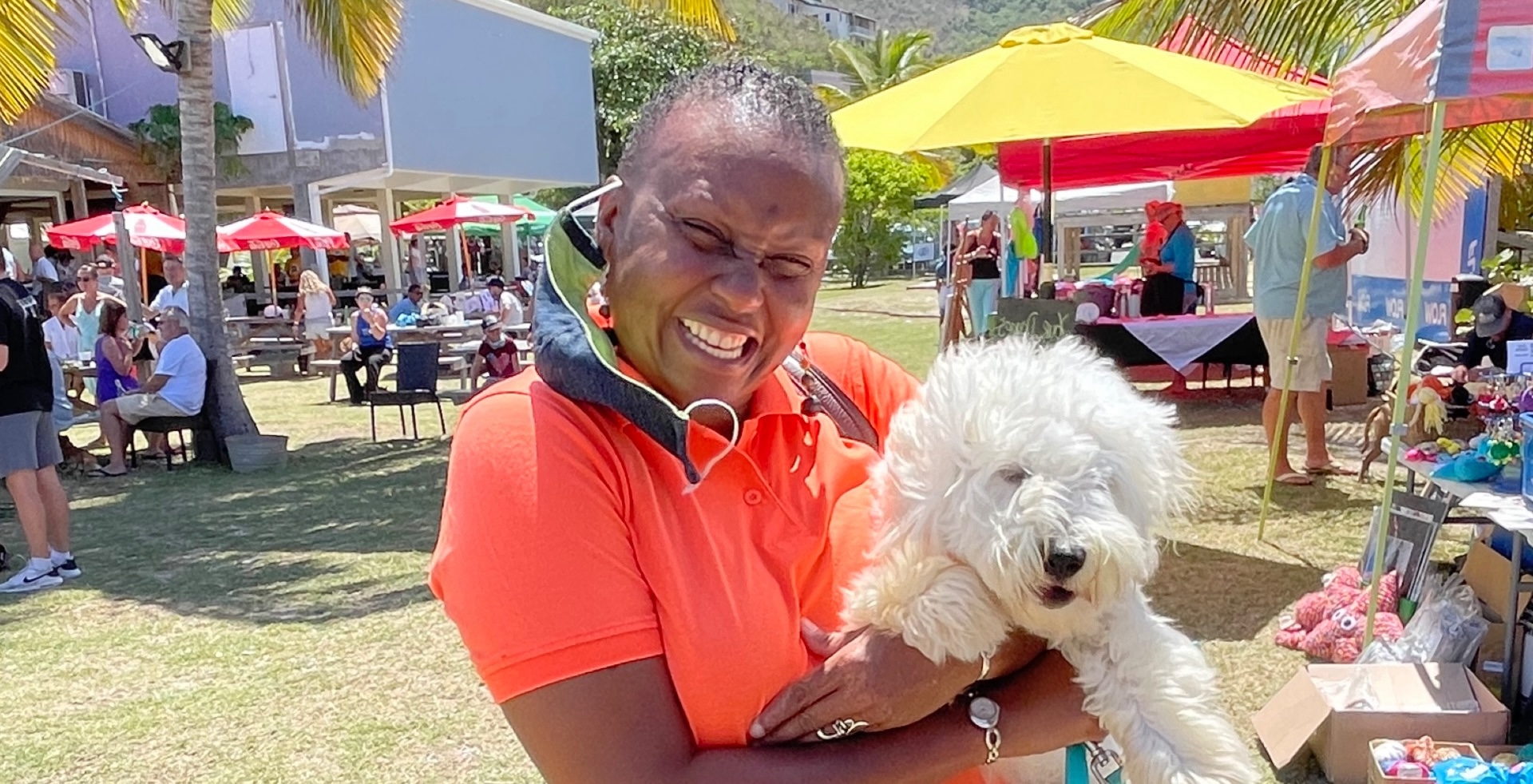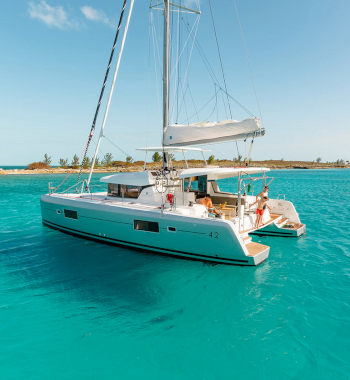Do it all on Anegada!
By Claudia Colli
I’ve spent the day on Anegada on multiple occasions, going to landmark places like Loblolly Bay or Cow Wreck beach. But my last trip was different. Accompanied by my husband and our son Jason, who is an adventurer at heart, we decided to “do it all. We would explore Anegada in just a single day. Join us as we drive around this island of sun, sand and unique wildlife and make some surprising discoveries along the way.
Sandy and flat, Anegada is special among the Virgin Islands. It is the only inhabited British Virgin Island formed from coral and limestone, making it a playground of sun and sand. Unlike most of its Virgin Island neighbors, it is virtually flat with a maximum elevation of 28 feet. Then there is the infamous Horseshoe Reef. The 18-mile-long reef, the largest barrier reef in the Caribbean, acts like a giant snare and has been the cause of innumerable shipwrecks from Spanish galleons to unsuspecting pleasure boats.
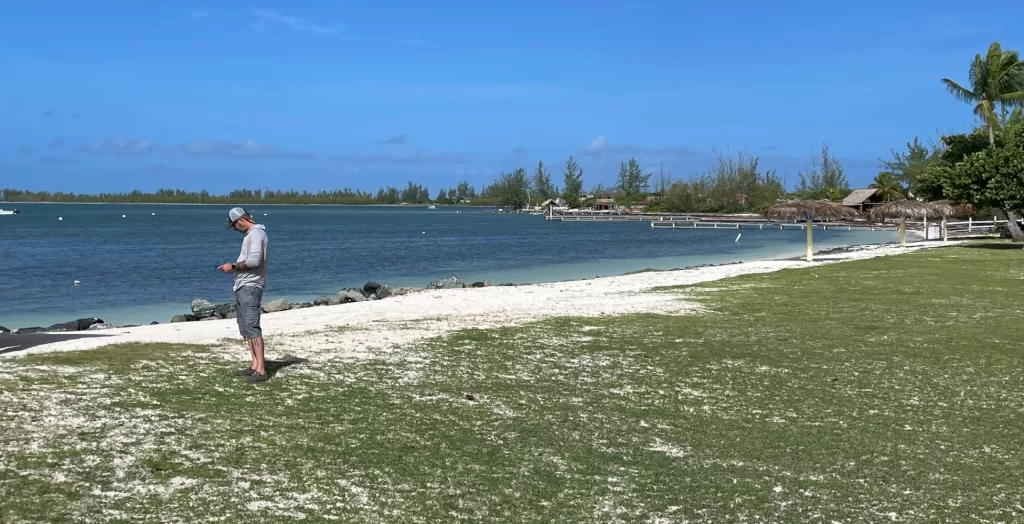
Around 300 hearty souls live on Anegada and we were about to join them, even if it was just for a day. We took a 7:30 ferry that morning from Road Town. The boat made a brief stop at Virgin Gorda, and then turned northward, getting to Anegada in about an hour. We had rented a car from the Anegada Reef Hotel, located a short walk from the ferry dock. Run by the amiable Wheatley family, brother Lawrence, sister Lorraine and their mother Vivian, the Anegada Reef restaurant and hotel is an island institution, and one of the first hostelries to be built on the island. We had breakfast there, enjoying the view of the sea and the occasional seabird walking along the beach.
Lawrence gave us a rudimentary map of the island, but Jason, ever prepared, had GPS – although it was barely necessary since the roads on Anegada are minimal. Our biggest decision was whether to go clockwise or counter clockwise. We decided to go counter clockwise.
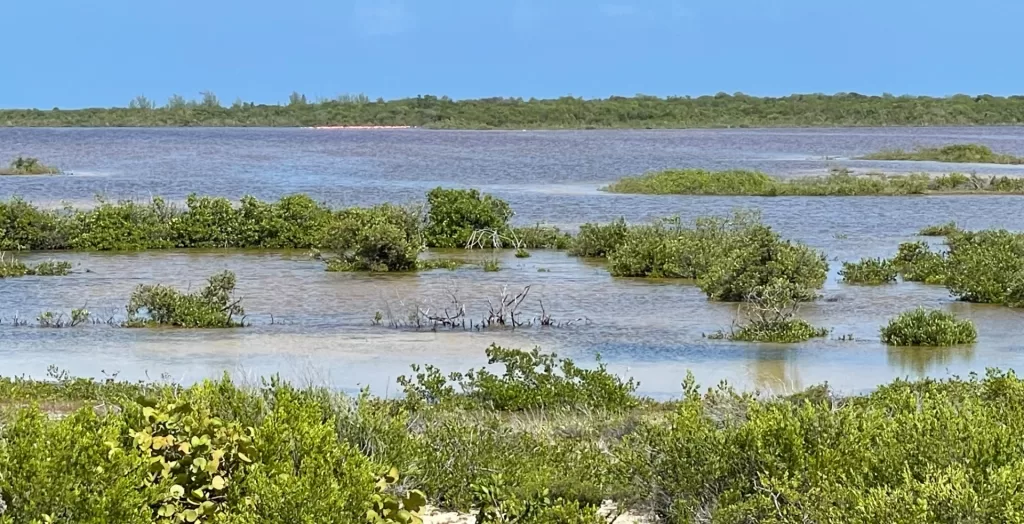
Our first stop was the flamingo viewing platform located on the lower edge of the aptly named Flamingo Pond. The flamingos were on the opposite side, a distinctive pink blur in the distance. My fancy new phone with multiple lenses took in the scene, but alas, the flamingos were just too far in the distance to get a good photo. At least, I could say I saw them because the flamingo population on Anegada is a heartwarming success story.
At one time, there were an estimated 10,000 Roseate Flamingos on Anegada. An early 19th century naturalist was so impressed that he wrote in his memoir of their overwhelming numbers. But in the late 1800s and up to the mid-20th century these wonderful creatures were hunted for their meat and their feathers, which were used to decorate women’s hats. By 1950 they were all gone. That is, until the National Parks Trust of the Virgin Islands stepped in. In 1992, with the help of the Bermuda Aquarium, Natural History Museum and Zoo and Dr. Jarecki and the Guana Island Science Sanctuary, NPTVI was able to reintroduce approximately 22 birds. Now there are a couple of hundred!
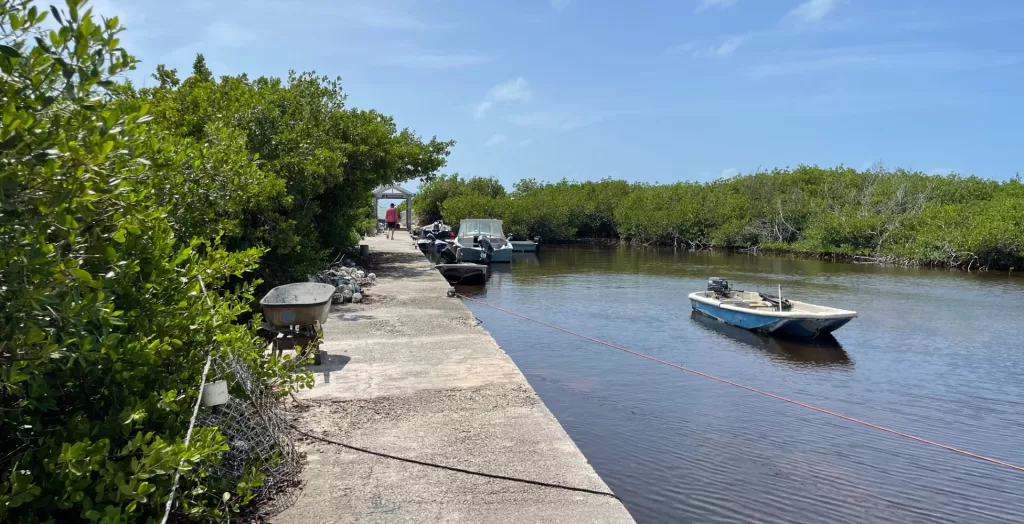
Fisherman’s Wharf was next on the itinerary. Anegada is historically – and to some extent, still is – an island of fishermen. And here is where they dock, launch their boats and offload their catch. The original dock was built from bullet wood which is naturally decay-resistant to water and barnacles. Now it is concrete.
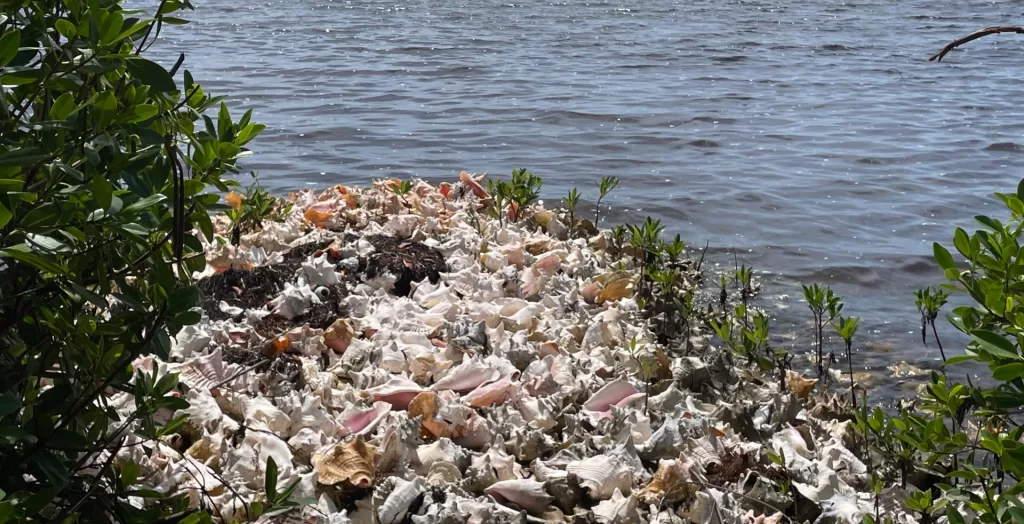
Anegadian fishermen used yualas (flat bottom boats) to reach their sloops which were anchored in the bay. We walked to the end of the dock where we got a distant view of one of Anegada’s famed conch islands. The islands, made up of discarded conch shells, were first started by the Taino Indians who inhabited Anegada around 1,000 years ago. Since then, Anegada fishermen have continued to build up the islands, attesting to the popularity of conch as an island dish. I can personally recommend a dinner of stewed conch, a local favorite.
Next, we took a quick tour of The Settlement, a small village of wooden and concrete houses. I guess you would say it is the island’s main town (albeit its only one). We passed the island’s administration building, the fire station and went onto the National Park’s Head Start Nursery. This nursery, though, is for young iguanas, not children. The Anegada Rock Iguana is native to Anegada and critically endangered, a victim of loss of habitat and predation by feral cats. The hatchlings are collected by park rangers and local volunteers, and raised in enclosures until released back into the wild.
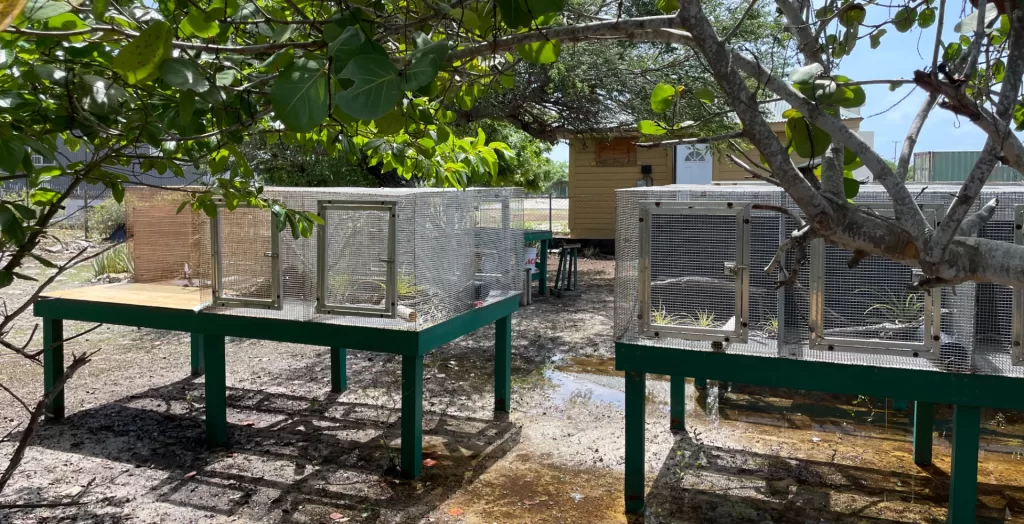
Jason got back behind the wheel and we next headed to Loblolly Bay, a must on any Anegada itinerary. This bay with its brilliant white beach is the epitome of an Anegada beach. We had a beer at the Big Bamboo, an iconic beach bar where we were given a warm welcome by staff and soaked up the Anegada vibes. Anegada is often referred to as the island of endless beaches, and if you start here, you could keep on walking along its sandy perimeter, and virtually circumnavigate the island. The Horseshoe Reef is just offshore, and is a popular snorkeling spot. We, though, were content to just look since we had more places to go.
So far, Jason was doing a stellar job as tour guide but his driving skills had yet to be tested. We left Loblolly and took a right to follow the sandy north shore road. It had rained recently and sections of the road was flooded – turning it into a sandy slurry. The thought of going through the water was daunting. An islander at heart, Jason knows rough conditions and we navigated through several of these lake-like puddles with nail-biting ease.
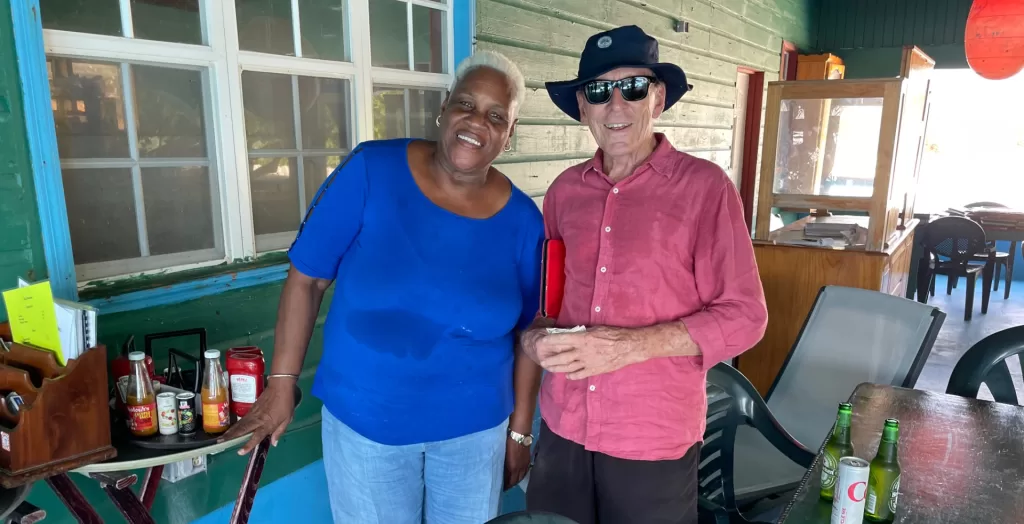
Next on the agenda was lunch at the Anegada Beach Club. With its thatch roofs and post and beam construction, it is the epitome of the island lifestyle. Maybe a bit more south seas than Caribbean, but still a little treasure. Palapas sit on the beach, and more conventional hotel rooms and a restaurant surround the pool. We had lunch and then hit the road again.
It was time to go back to the Anegada Reef Hotel, return the car and have a happy hour cocktail at the hotel’s open-air bar. We discovered that the bar was not only busy with ferry goers also waiting for the boat, but a popular happy hour spot for Anegada residents. From our bar stools it was a prime location to watch the ferry come in. The bartender was charming, the conversation was lively and, all in all, it rounded our day off perfectly.
Smiths Ferry (284) 494-4454 and Road Town Ferry (284) 494-2323 both go to Anegada from Road Town on Mondays.
For a different Anegada adventure go to
Learn more about Anegada’s iguanas and flamingos and the National Parks Trust of the Virgin Island’s conservation programs at

